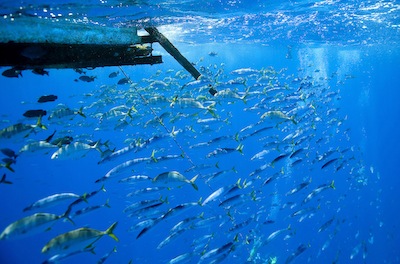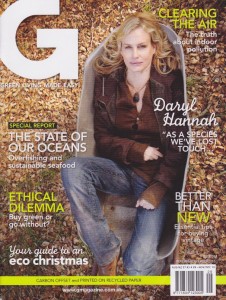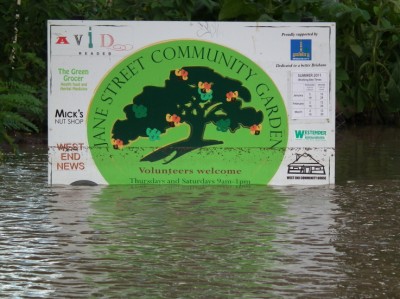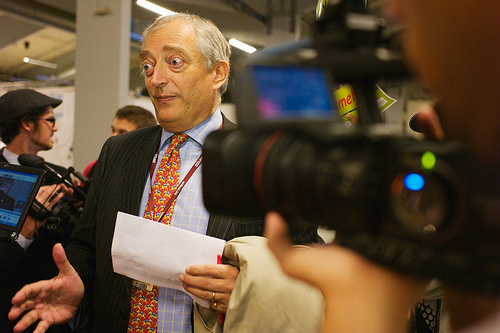THE director of Australia’s Bureau of Meteorology Dr Greg Ayers must surely possess the patience of a saint or, if you don’t believe in saints, then the patience of my wife who has been waiting for me to fix the hole in the bathroom ceiling for well over three years.
Dr Ayers has finally gained some closure on an issue concerning Cardinal George Pell, the head of the Catholic church in Australia who while believing in saints, doesn’t believe in human-caused climate change.
Dr Ayer’s unloaded his frustrations on a senate estimates committee this week, saying he believed Cardinal Pell had been “misled” by a book called Heaven + Earth, written by Australian climate sceptic and mining director Professor Ian Plimer.
Back in October last year, the Senate’s Environment and Communications Legislation Committee agreed to table a letter from Cardinal Pell which quoted heavily from Heaven + Earth to claim there were “good reasons for doubting that carbon dioxide causes warmer temperatures”.
After an early battle with Senator Ian McDonald, who didn’t want to give Dr Ayers time to respond, the bureau’s director finally managed to get his frustrations off his chest and onto the Hansard record. Dr Ayers’ explained how Cardinal Pell’s views on climate change were not only unsupported by the science but in some cases directly contradicted some of its core understandings. For example, he pointed out that Cardinal Pell had miraculously given nitrogen a new physical property.
At one stage [Cardinal Pell] lists greenhouse gases. Included in the list is the gas nitrogen. That is not a greenhouse gas; it is 78 per cent of the atmosphere. You cannot have people out there telling the public that nitrogen is a greenhouse gas, because it is not.
You can read Dr Ayers’ very full response to Cardinal Pell on Hansard here. The fact that Dr Ayers’ response is now there and that I can now point to it, illustrates why he argued so forcefully to be allowed to have his views put on record in the first place.
But as well as being a correction to the cardinal, Dr Ayers’ also critiqued the book which Cardinal Pell had drawn from (Professor Plimer, look away now).
The cardinal I do not anticipate would be an expert in these fields of science, so he has quoted very heavily from this book and the book is, frankly, misleading to all Australians in terms of what it represents.
Why would I say this book is not science? It is not me who says it so much, although I have read it myself; it has been widely reviewed by people in the scientific arena and it has been very heavily criticised for not presenting science but presenting a polemic from one individual. It has not been scientifically peer reviewed.
Dr Ayers’ goes on to describe in detail the great many scientific errors in Professor Plimer’s book. As I’ve personally pointed out many times – including during a face-to-face debate in Brisbane in 2009 – Professor Plimer has never written a peer-reviewed paper on climate change in his life.
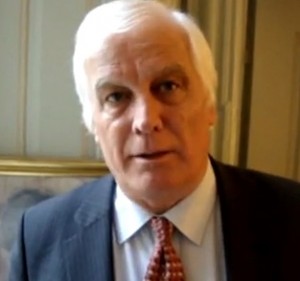
But what neither Cardinal Pell nor Dr Ayers nor the media coverage has pointed out, is Professor Plimer’s role as a director and chairman with several mining companies, an occupation which he has recently expanded. These same energy-intensive operations are those which would be hardest hit under any plans to price carbon.
Professor Plimer has long-standing roles as a non-executive director with Australia-based mining companies Ivanhoe Australia and CBH Resources, which mainly dig up silver, gold, lead.copper, zinc and other minerals. Professor Plimer is shown in company reports to have earned about $270,000 from Ivanhoe in the last two years. He earned more than $300,000 from CBH Resources over the same period. He is also a director of UK-listed Kefi Minerals, where he recently disposed of 2,400,000 shares worth about $350,000. He has recently taken on the role as chairman of an unlisted tin mining company, called TNT Limited.
Professor Plimer is also a director of Ormil Energy, which is currently engaged in a $3.2 million commitment to investigate coal seam gas and coal mine gas in the Sydney basin, pending government approvals.
But back to Dr Ayers and the senate estimates hearing, where Nationals Senator Ron Boswell pleaded unsuccessfully that Professor Plimer should also be allowed to appear to answer the criticism.
Senator Boswell should already have been well aware of the scathing criticisms of Heaven + Earth, because he launched that very same book in May 2009, a good two weeks after a swathe of scientists had attacked its integrity.
Liberal Senator Ian Macdonald, who is also sceptical of human-caused climate change, was pressing for Professor Plimer’s views to be placed on the record and encouraged Ayers to “go and listen to Professor Carter some day” referring to Professor Bob Carter, another of Australia’s confirmed sceptics of human caused climate change.
Senator Macdonald also suggested he would be tabling an article which recorded how the US house of representatives had recently voted to pull all funding to the UN’s Intergovernmental Panel on Climate Change.
Given that the oil and gas industries have been found to have donated more than US$21 million to the current US Congress, should we be surprised that it has now decided to pull the US$2.3 million funding for the IPCC?
The calls for an appearance by Professor Plimer didn’t impress Greens Senator Scott Ludlam, who claimed that all Professor Plimer needed to do to get himself heard was to “publish another work of science fiction”.
While the retort was obviously meant as a joke, there’s no fun in knowing that Australian Senators and the head of the Catholic church seem happy to take their views on climate from that piece of “science fiction”.



